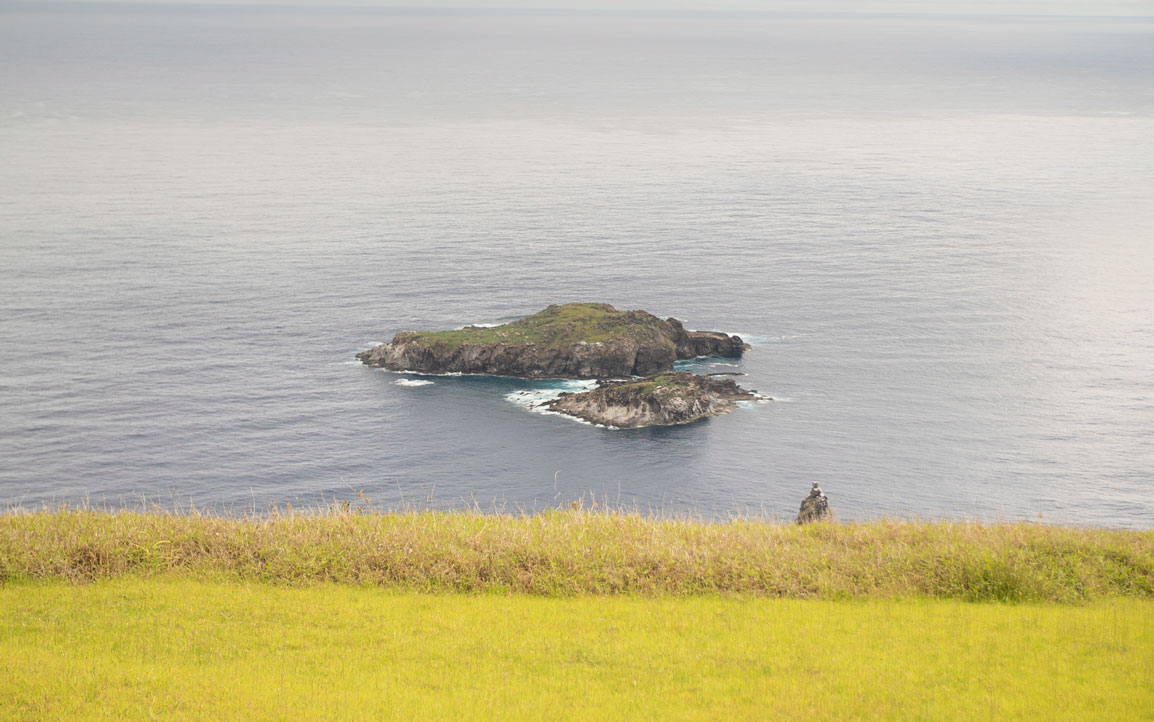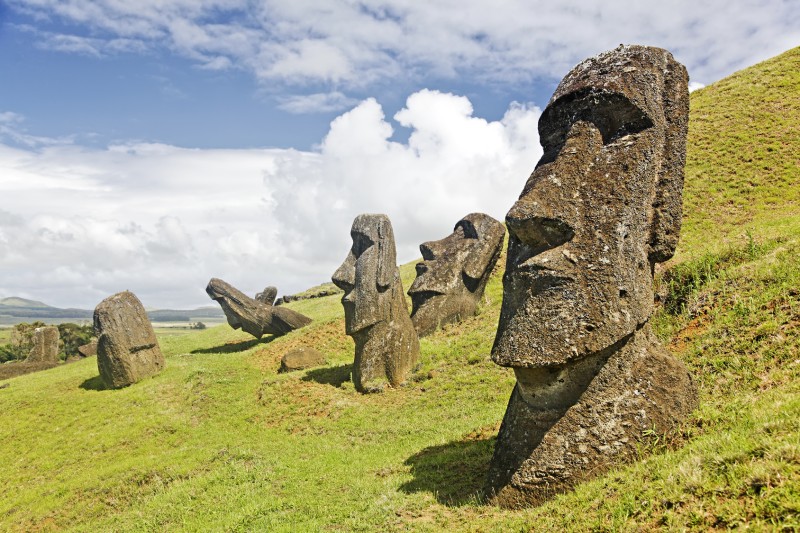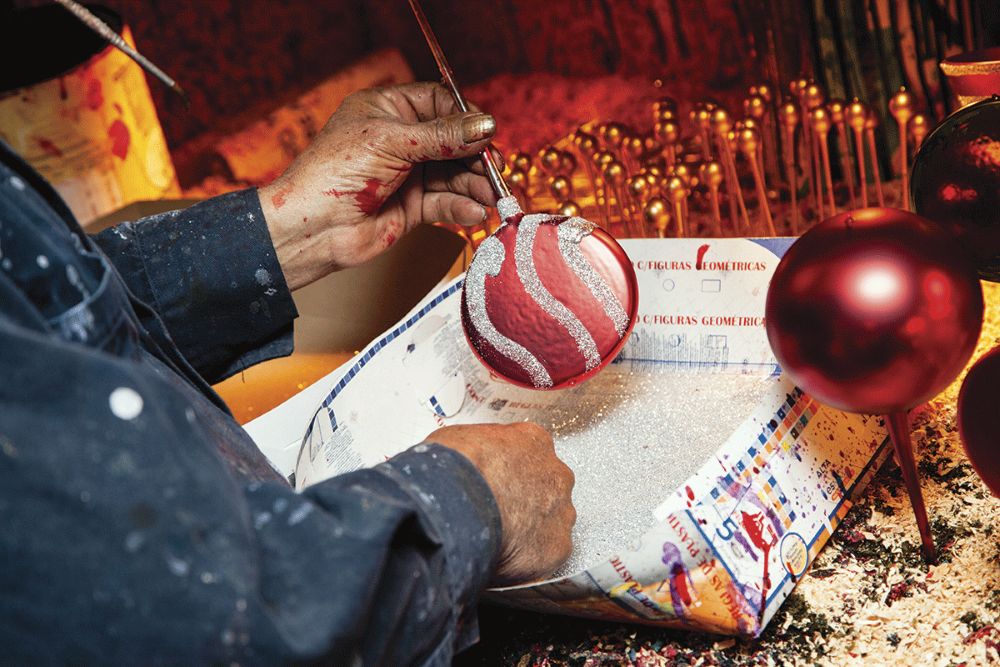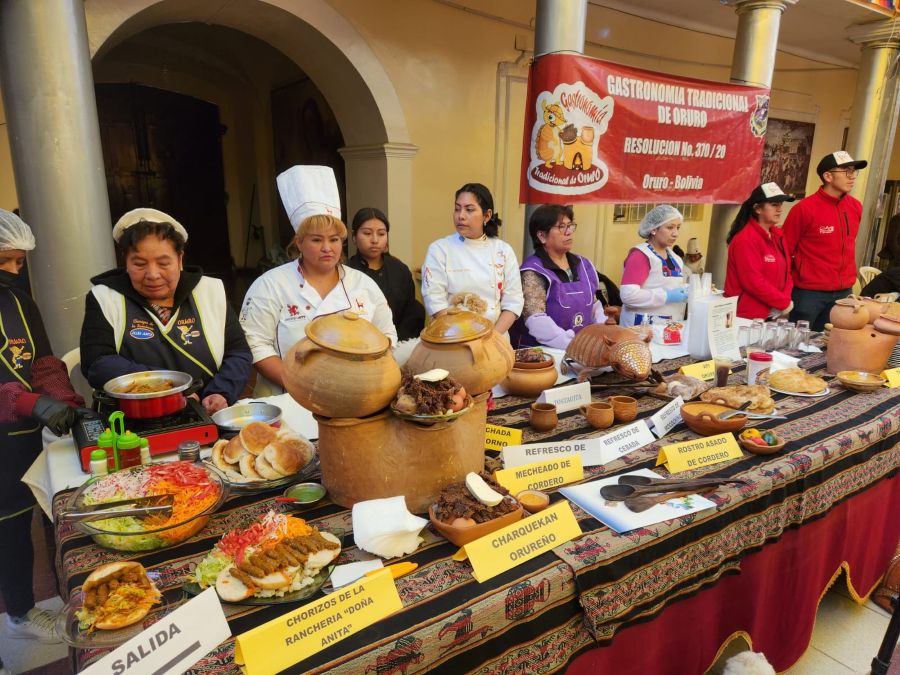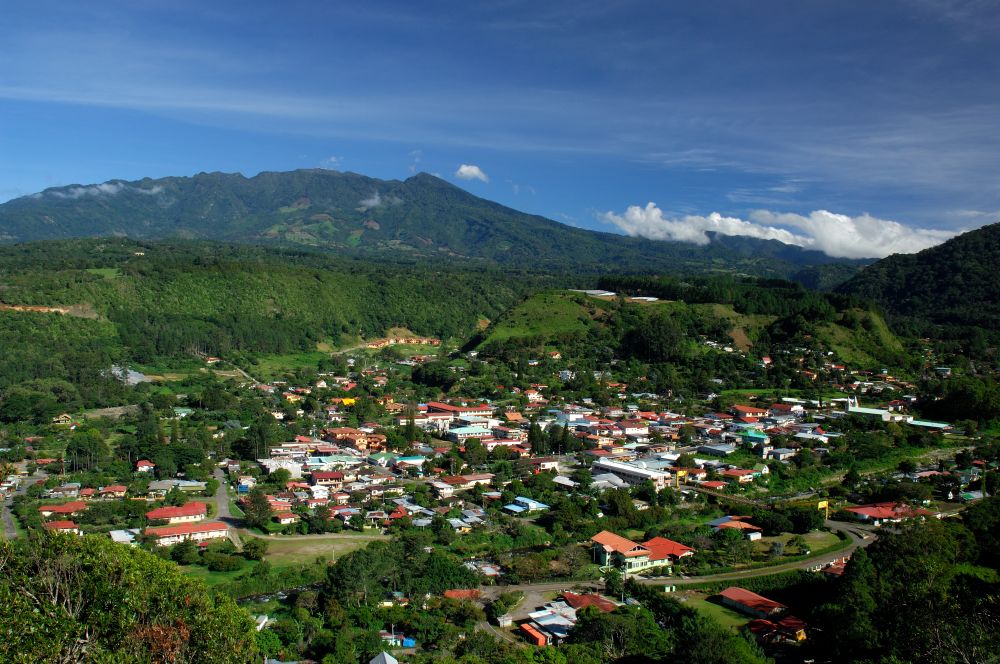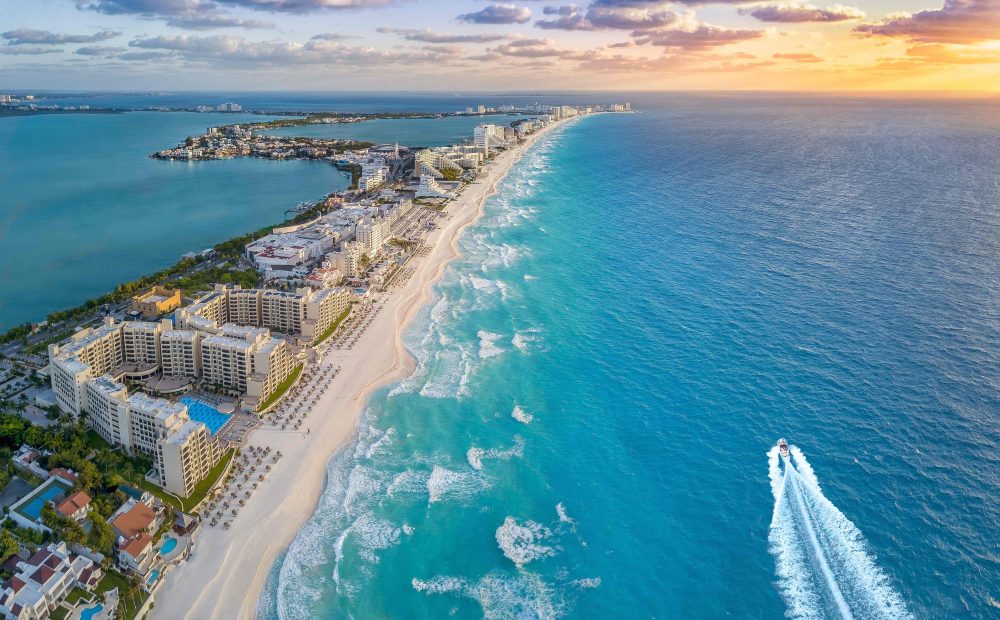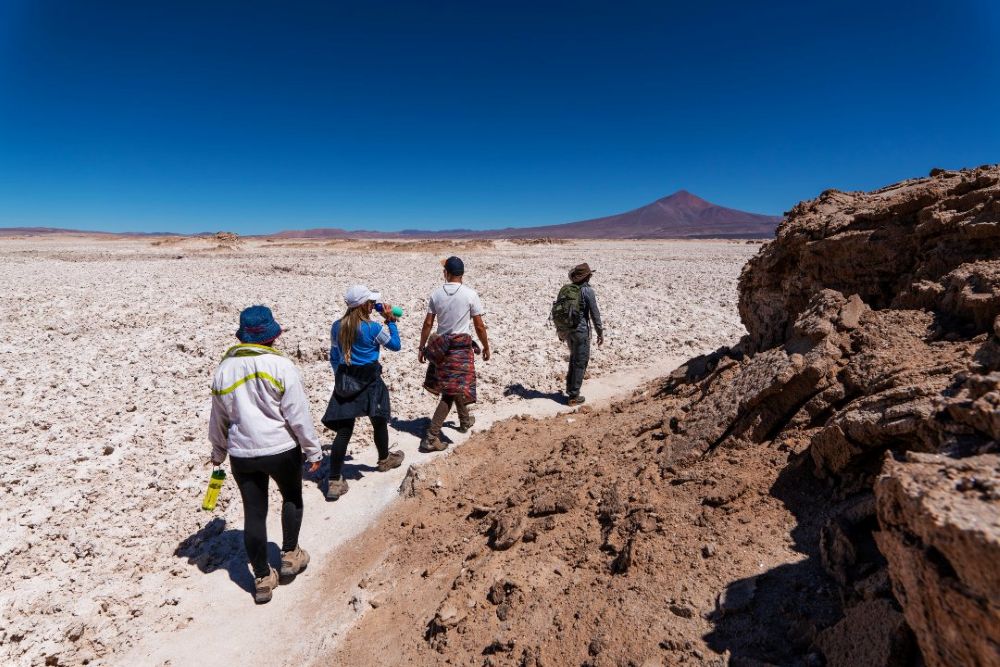Par Camilo Gomez du blog Les Nouveaux Vagabonds – Cet article a été publié initialement sur le site www.elcafelatino.org
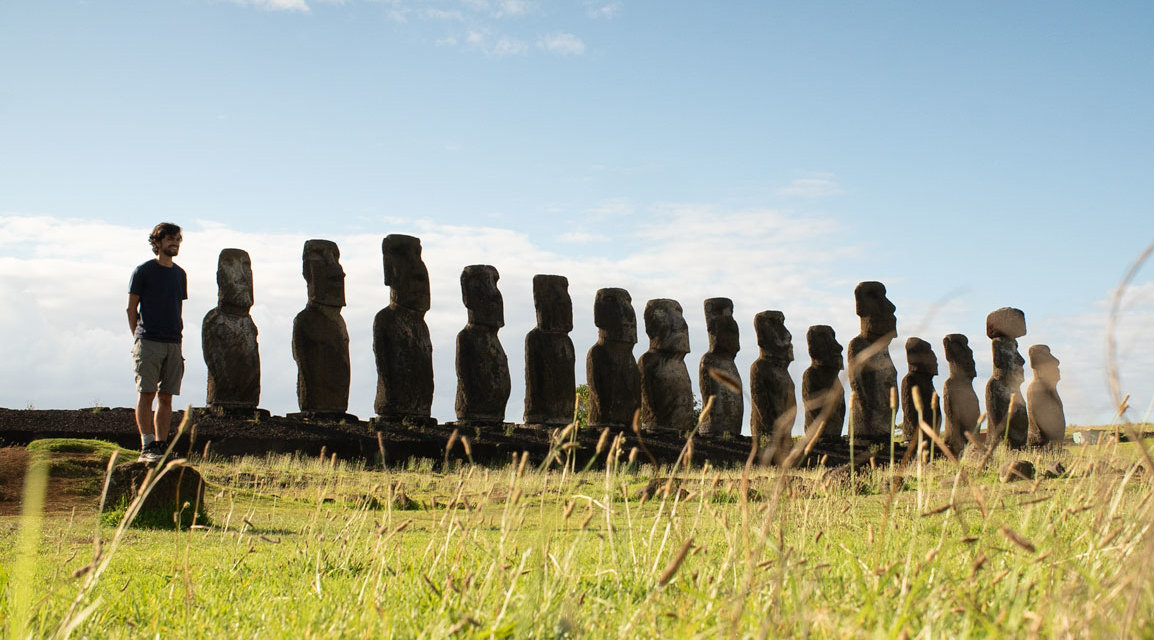
Nous avons tous un pays dans un coin de notre tête qui nous fait rêver et qui s’immisce dans nos pensées quand nous voulons nous évader. À 3500 km des côtes chiliennes, en plein centre de l’océan Pacifique, jamais nous n’aurions pensé atterrir dans l’un des endroits les plus isolés du monde : l’île de Pâques (ou Rapa Nui en pascuan).
Cet isolement n’a pas empêché l’île d’acquérir une grande réputation. Les voyageurs viennent depuis l’autre bout du monde pour découvrir les énigmatiques figures qui se dressent partout sur l’île et qu’on ne retrouve nulle part ailleurs : les Moaï.
Iorana : ce mot pascuan pour dire bonjour sonne comme une invitation, nous l’acceptons. Partons ensemble percer les mystères de cette île volcanique et de ses immenses monolithes sculptés, symboles de Rapa Nui.
Un passé incertain
Rapa Nui, Hawaï et la Nouvelle-Zélande forment un triangle imaginaire constitué d’un ensemble d’îles au milieu du Pacifique : la Polynésie. Ce triangle résulte de la migration de grands navigateurs polynésiens à travers les âges. Ils pouvaient détecter la terre ferme bien avant de la voir en scrutant la forme des vagues et des nuages et en suivant les oiseaux et les étoiles.
Les premiers pascuans étaient sans doute des descendants des îles Marquises mais on ignore beaucoup de leur culture. Leur tradition était principalement orale et la seule forme d’écriture connue a été perdue lorsque les dépositaires du savoir furent déportés par des marchands d’esclaves.
Il existe encore des plaquettes que personne ne parvient à déchiffrer ! Toutes ces zones d’ombre dans le passé de Rapa Nui contribuent aux mystères qui planent autour de cette île énigmatique.
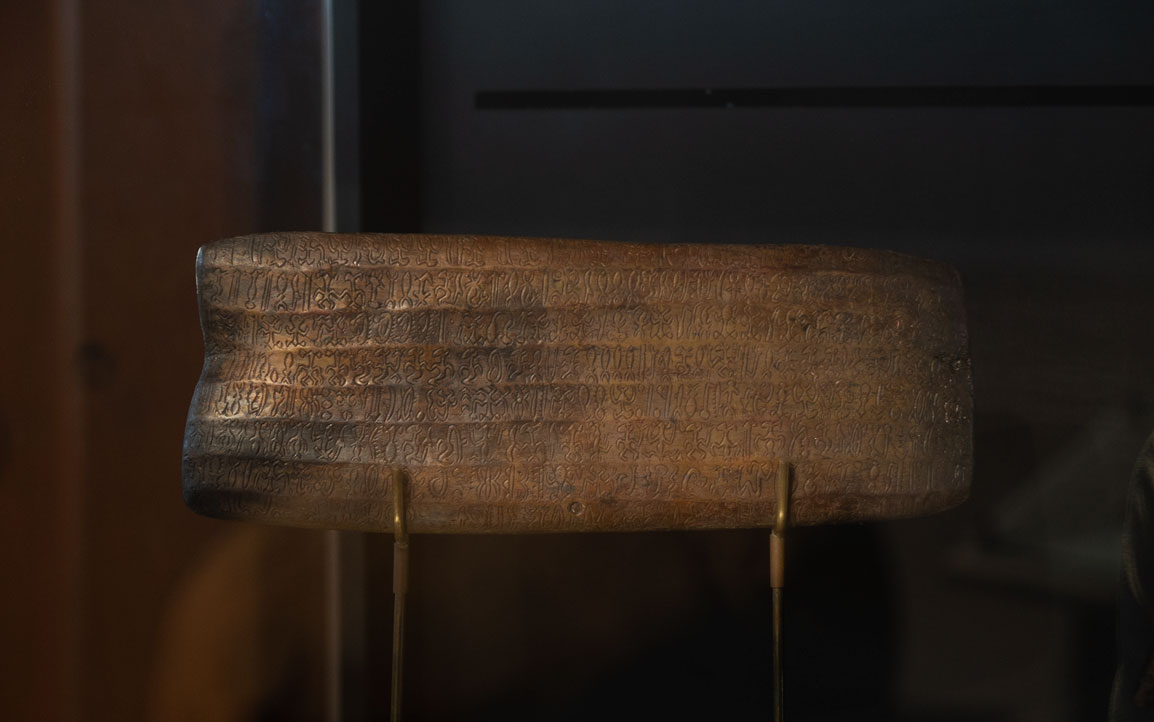
Les Moaï, symbole de Rapa Nui
L’île de Pâques compte environ 900 Moaï. Certains sont dressés, d’autres inachevés en partie enfouis sous terre et beaucoup renversés suite à des guerres des clans. Le plus petit des Moaï dressé mesure 1,13 m tandis que le plus grand atteint 9,80 m pour plus de 74 tonnes !
Fabrication
La grande majorité des statues ont été sculptées dans la carrière du volcan Rano Raraku. On estime qu’une équipe de sculpteurs pouvait mettre jusqu’à deux ans pour terminer un grand Moaï. Chaque statue était taillée dans le tuf volcanique, une pierre aussi facile à travailler que le bois.
Le mystère du transport
Les spécialistes continuent de s’arracher les cheveux : comment les habitants de l’île ont-ils réussi à déplacer ces colosses pouvant peser jusqu’à 80 tonnes sans roues, ni bête de trait pour les aider ? Plusieurs théories ont été avancées : des rondins de bois pour les faire rouler, des cordes pour les faire dandiner, des traîneaux pour les tirer. Aucune certitude. Peut-être marchent-ils comme le veut la légende ?
Sens et utilité
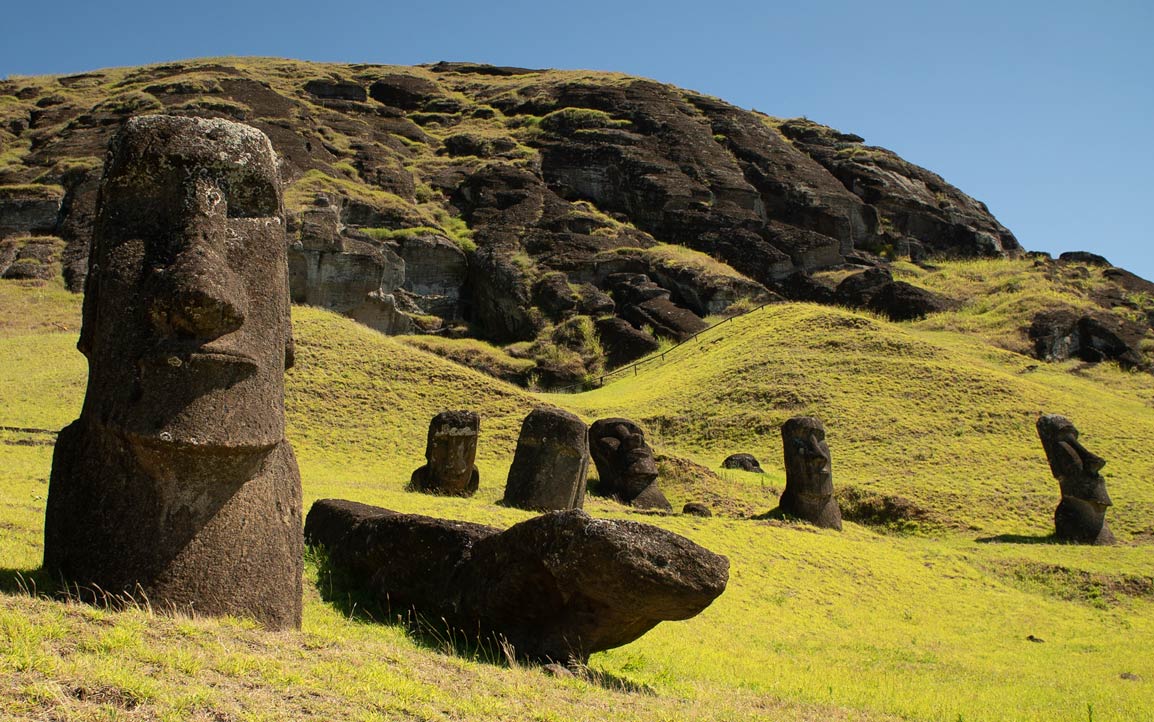
Les Moaï sont des représentations des ancêtres fondateurs de chaque clan. Ils sont toujours placés dos à la mer, face au village et aux habitants (à une exception près) dans des centres de cérémonie. Une fois installés, les yeux étaient sculptés et déposés pour raviver le mana (âme) du Moaï et protéger la tribu.
Récemment, une étude a prêté à ses figures une autre utilité plus terre à terre : la construction aurait permis de favoriser la fertilité des sols et l’agriculture. La carrière Rano Raraku n’aurait pas simplement servi à extraire de la roche et sculpter les Moaï mais également à faire pousser des cultures essentielles pour la survie des habitants grâce au processus d’extraction de la roche.
Le culte de l’homme oiseau
Le culte des Moaï a perdu peu à peu son importance pour être remplacé par un culte tout aussi unique : le culte de l’homme-oiseau. Une fois par an, une compétition avait lieu entre les représentants de chaque chef de tribus. Les participants devaient trouver le premier œuf d’un oiseau de sterne sur un l’îlot à 2 km en face de Rapa Nui.
C’était toute une épreuve : ils devaient s’y rendre à la nage, lutter contre les vagues et les requins et revenir avec l’œuf intact en escaladant une falaise de 300m. Le vainqueur gagnait le titre prestigieux d’homme oiseau et devait vivre reclus pendant un an du fait de son caractère sacré sans que personne ne puisse l’approcher ni le regarder !
